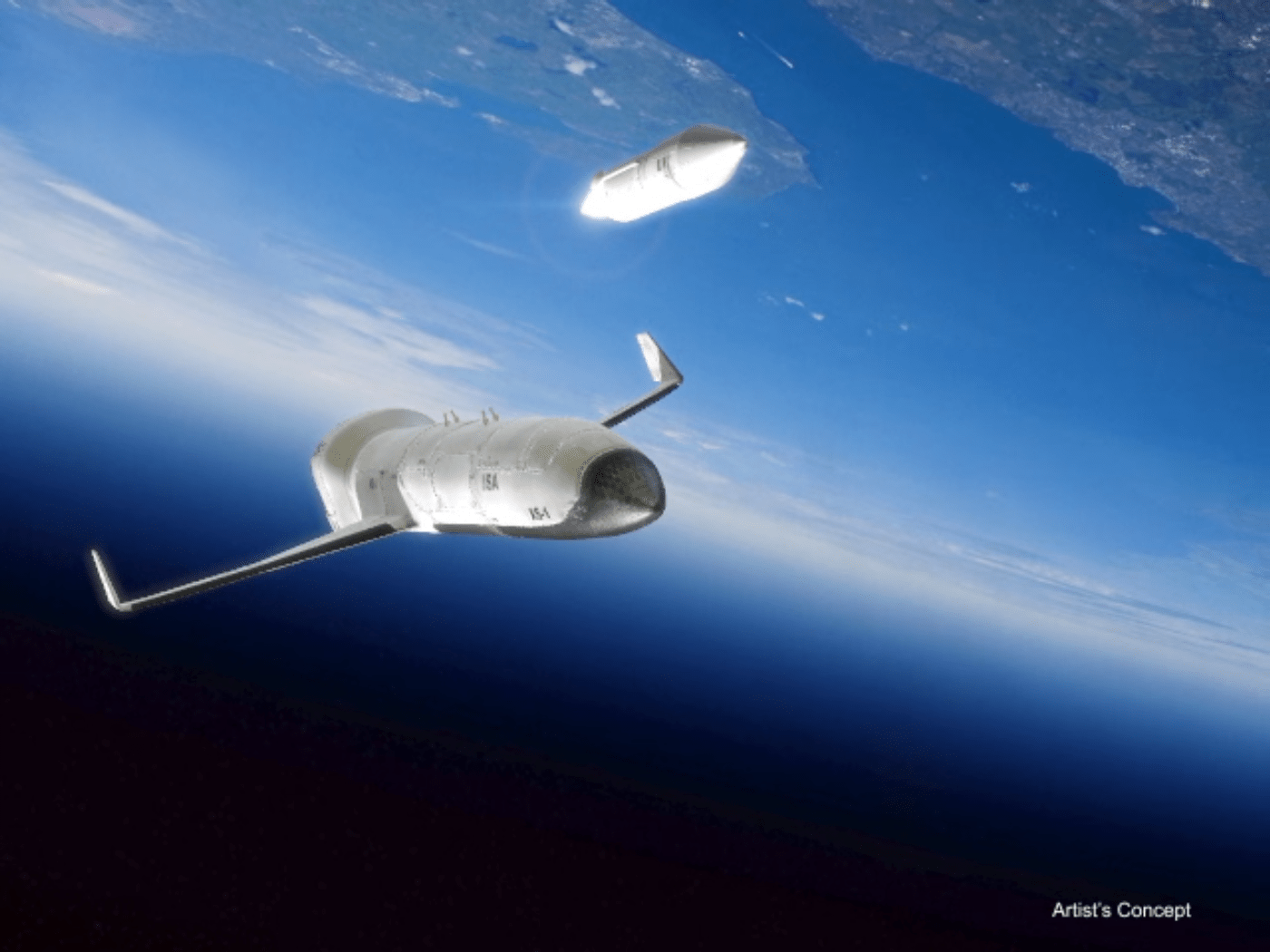The Defense Advanced Research Projects Agency (DARPA) is looking to develop a fully-reusable unmanned spaceplane, and they are now ready to start working their proposed Experimental Spaceplane (XS-1). The agency has put together a “special forces” of sorts in the space industry, awarding prime contracts for the first phase of development to a combination of six companies. These six are a combination of “old” and “new” space companies and are:
The Boeing Company (working with Blue Origin, LLC)
Masten Space Systems (working with XCOR Aerospace)
Northrop Grumman Corporation (working with Virgin Galactic)
“We chose performers who could prudently integrate existing and up-and-coming technologies and operations, while making XS-1 as reliable, easy-to-use and cost-effective as possible,” Jess Sponable, DARPA program manager. “We’re eager to see how their initial designs envision making spaceflight commonplace—with all the potential military, civilian and commercial benefits that capability would provide.”
Each commercial entity will be able to outline their vision of the XS-1, but DARPA wants the the spaceplane to provide aircraft-like access to space for deploying small satellites to orbit and it its development, they’d like to create technology for next-generation hypersonic vehicles, — and do it more affordably.
They envision that a reusable first stage would fly to hypersonic speeds at a suborbital altitude. Then, one or more expendable upper stages would separate and deploy a satellite into low Earth orbit (LEO). The reusable first stage would then return to earth, land and be prepared for the next flight.
Key to the development, DARPA says, are modular components, durable thermal protection systems and automatic launch, flight and recovery systems that should significantly reduce logistical needs, enabling rapid turnaround between flights.
DARPA’s key technical goals for the XS-1 include flying 10 times in 10 days, flying to Mach 10+ at least once and launching a representative small payload to orbit. The program also seeks to reduce the cost of access to space for 3,000- to 5,000-pound payloads to less than $5 million per flight.
Source: DARPA


I’d like to see designs for hypersonic commercial SCRAM-jet liners that with every flight would act as a ‘mother ship’ and carry a similar orbital or sub orbital ‘relay’ rocket. 3 hour flights from NY to Tokyo? Then say, with every x-continental high speed flight, you launch an advanced ‘Robonaut’ to the Moon to help build the lunar colony? Imagine earthbound controllers in a VR environment performing tasks with advanced Robonauts on the MOON! ALICE!
I see no mention of Lockheed or ATK… this is, dare I say, a hopeful turn of events.
Personally I agree with their ideal of a two stage to orbit vehicle. A scramjet is good for maintaining speed in thin air, but a rocket can just punch through the lower atmosphere and accelerate in total vacuum.
This is the same direction SpaceX is headed, and hopefully a little competition will get them to scale things up quickly. We’ve already waited too long to see a truly reusable booster.
Hey, I’ve got a new idea! Let’s use a chemical rocket, but we’ll put wings on it, well, on part of it, so we can reuse it.
1970 called. They think this is a really neat idea, but it’s been 40 years, man … is this really all you could come up with?
Though DARPA’s reusable space-plane project is indeed an old idea, it hasn’t been done before. In fact, the shuttle was originally intended to have a fly-back first stage like the XS-1. Instead it got solid rocket boosters and disposable external fuel tanks that likely took weeks or even months to rebuild, construct, deliver and assemble. According to Elon Musk, “a rocket’s first stage accounts for three-quarters of its total price tag.” So having rocket with a rapidly reusable ‘stack-gas-n’-go’ first stage could slash launch cost by 75%. This is too great to ignore.
There’s no air across most of the journey to space. So chemical rockets are best unless someones sitting on some anti-gravity technology or something.
We’ve got newer materials and better computers. The engines are slightly better too. There’s a good chance they could make a reusable booster that actually cuts costs. That’s what Elon Musk is betting on, anyway.
The main problem is that a true reusable booster has never progressed past the testing phase before. What we did in the 70’s was make a horridly oversized reusable payload cover. It was heavy, unsafe, and inefficient. People have since used it as a justification to not research reusables anymore.
…That is until SpaceX started bringing their own to market. Now there’s a problem where a private company will be undercutting major government contractors.
That’s not a situation they’ll allow.